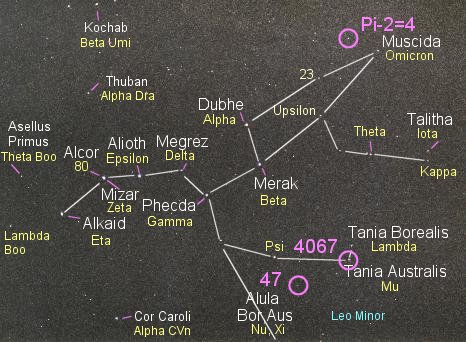

THE PLANETThe circle shows the location of the class G1 star 47 Ursae Majoris (in the constellation Ursa Major). It has not one, but two, planets and thus a planetary system far more like that of our Sun than most of the other stars with planets. The system bears a vague resemblance to our Jupiter and Saturn. The innermost of the two averages 2.1 astronomical units (315 million kilometers, 196 million miles, 1.38 times Mars's distance from the Sun), and has a period of 2.98 years and a minimum mass of 2.4 times that of Jupiter. The outer body orbits nearly twice as far away, at a distance of 3.73 astronomical units (560 million kilometers, 348 million miles, or nearly 75 percent of Jupiter's distance from the Sun) with a period of 7.1 years and a mass at least 0.76 times Jupiter's. The orbit of the inner, larger, planet is somewhat eccentric, and carries the planet as roughly 10 percent closer and farther from the star than average. |